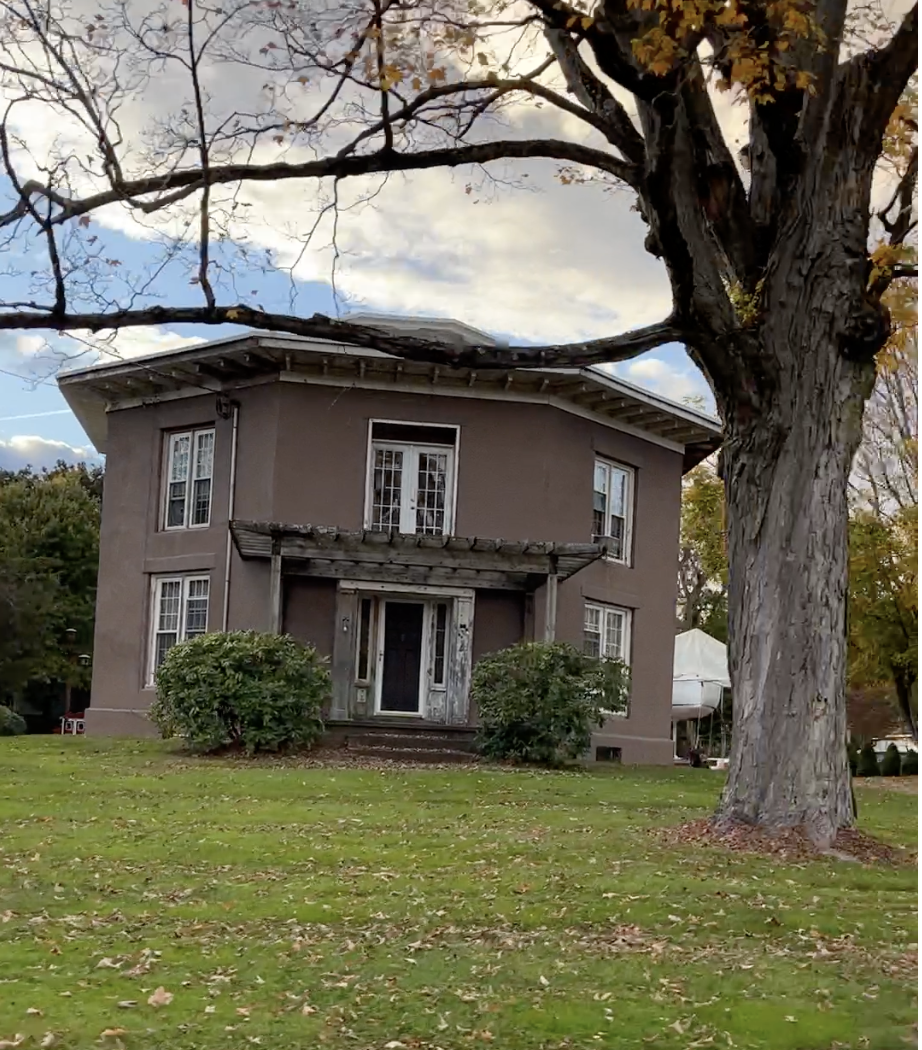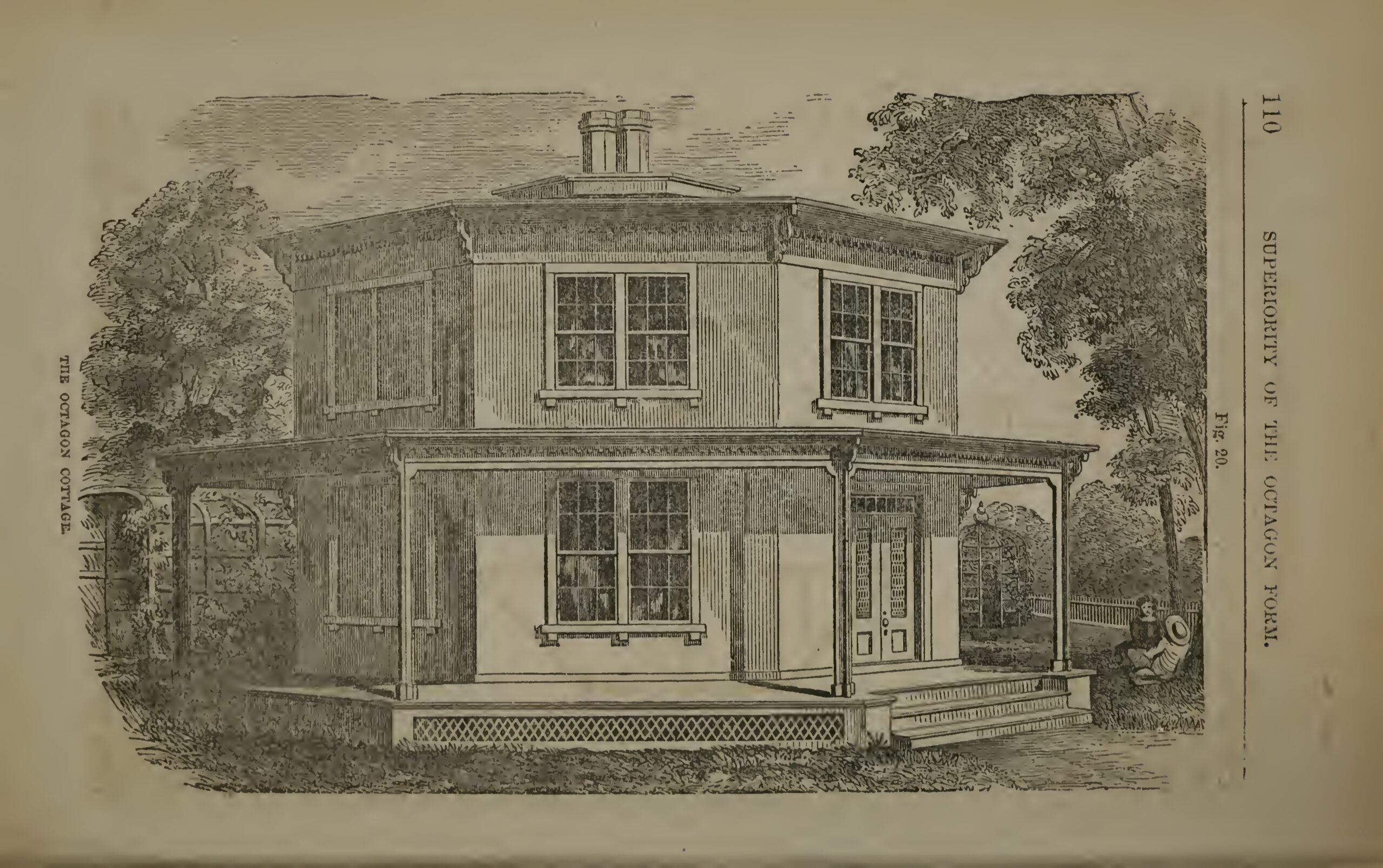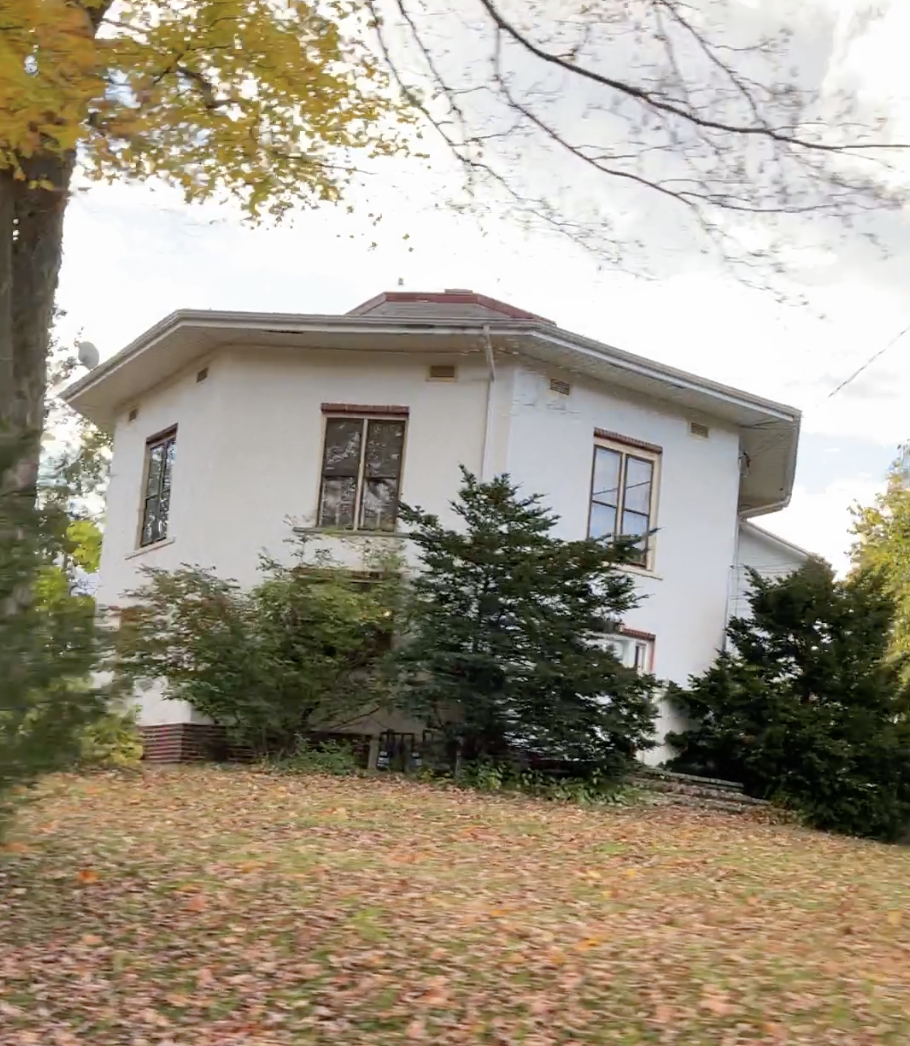There Are Eight Sides to Every Story
Connecticut’s Octagon Houses
According to the one article about these things and the zero amount of research I’ve done beyond that, there are 16 19th-century octagon houses still standing in Connecticut (and the Old Saybrook one is suss).
But since that article is by Daniel Sterner of Historic Buildings of Connecticut fame, I’m comfortable not looking any further. He wrote the article for Connecticut Explored, and laid out why these things are of interest in the 21st century.

37 New Place Street, Wallinford
I guess I have a bunch of octagon drive-bys in my future. Anyway, my pictures and short quips appear below the article: Connecticut’s Octagon Houses
In the middle years of the 19th century, one man’s passion for eight-sided houses ignited a brief architectural fad in the United States, and Connecticut retains some great examples. Orson Squire Fowler of Cohocton, New York (1809-1887) was an influential lecturer, author, and a partner in the publishing house of Fowler & Wells. He and his brother, Lorenzo Niles Fowler, are best remembered today as leading champions of phrenology. This long-discredited pseudoscience purported to explain human personality based on the shape of a person’s skull.
Orson Fowler’s wide-ranging theories extended to the ideal shape for people’s houses. Although he was not an architect or builder, he became convinced of the superiority of the octagonal form while he was planning the construction of his own home in Fishkill, New York.

Fowler shared his ideas in his 1848 book A Home for All; or A New, Cheap, Convenient & Superior Mode of Building. His objective was “to cheapen and improve human homes, and especially to bring comfortable dwellings within the reach of the poorer classes.” He observed that an octagon enclosed more floor space than a square house with the same total wall length. Reducing the external surface area, he reasoned, would make an octagon house cheaper to build than conventional homes. He also believed it would be easier to heat in winter and cool in summer and, with the aid of a rooftop cupola, would provide more natural sunlight and increased ventilation. To complement these advantages, Fowler advocated for such other domestic improvements as central heating and a system to filter rainwater for drinking.
While octagon houses never caught on as a means of providing affordable housing, they did appeal to affluent individuals who erected perhaps as many as several thousand across the country. Most were built in the 1850s, with interest waning after the Civil War. Sadly, many of them were later torn down, so that only a few hundred exist today. Connecticut has 16 surviving octagon houses built during the 19th century.
![]()
Connecticut’s Octagon Houses
Nathan Gould House, Bridgeport
Ebenezer W. Beckwith House, Cromwell
John T. Earle House, Danbury
Harry S. Smith & Deming Sexton Houses, East Hampton
Benjamin C. Phelps House, East Hartford
Leete-Griswold House, Guilford
Albert G. Stark House, Groton
86 Hallock Street, New Haven
56 Main Street, Old Saybrook
Joseph Williams & Gilbert Stancliff Houses, Portland
31 & 37 New Place Street, Wallingford

31 New Place Street, Wallingford (Other one is pictured at the top of the page)
The pair of octagon houses on Marlborough Street in Portland are the only other examples in Connecticut that are located on the same street as one another. There is a regular house between the two and aside from that tidbit, the only thing I can think to add here is that when someone buys a house on this street and moves in, I envision the following conversation:
“What’s your new address?”
“37 New Place Street”
“Yeah, your new place.”
“New Place Street.”
“You mean you don’t know the name of the road you’re moving to?”
“Nah. New Place Street.”
Et cetera.
Treat Nettleton & Solley Houses, Washington
![]()

Leave a Reply